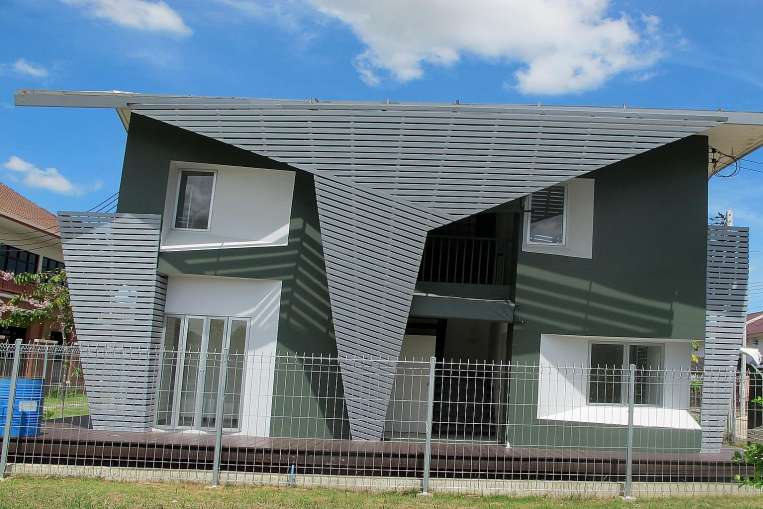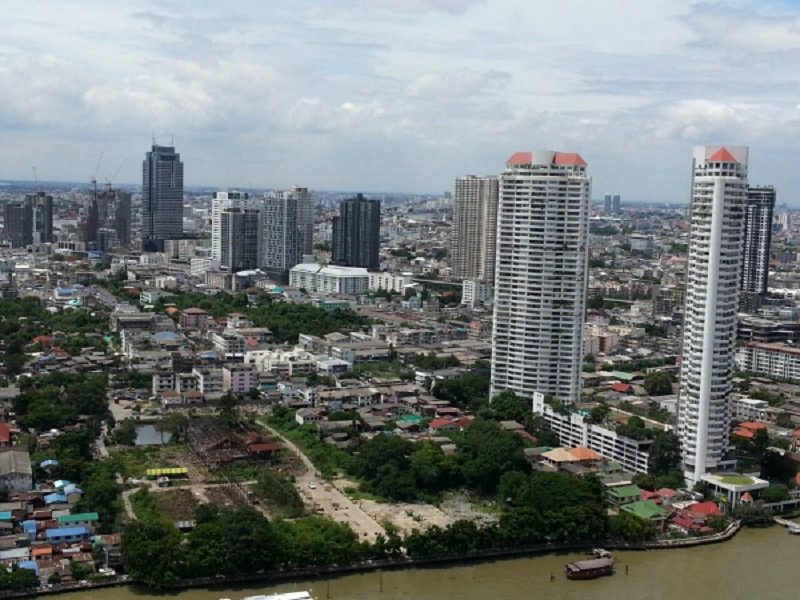As global warming causes water levels around the world to rise, an old architectural form, floating architecture, is being updated to enable living in flood-prone areas.
Floating architecture has been around for centuries, particularly in low-lying parts of Europe such as the Netherlands.
But its new incarnation, amphibious architecture, is attracting interest, with floating and amphibious homes and schools now being designed for flood plains from the United States’ Louisiana state to Bangladesh.
And over four days ending yesterday, a small gathering of 50 people who represent 80 per cent of the world’s experts in this architectural form shared ideas at the world’s first International Conference on Amphibious Architecture, Design and Engineering, in Bangkok.
The choice of the Thai capital was fitting. Some 150 years ago, it was mostly a floating city and, by all indications, could revert to being one in far less than the next 150 years. Much of the city is below sea level – and it is sinking further.
Among the delegates was Netherlands-based Mr Koen Olthuis, of the firm Waterstudio, which builds floating homes around the world for the super rich. Mr Olthuis wants to bring the same technology to the world’s slums, most of which are on or very near water.
IN HARMONY WITH NATURE
Somehow, we have to live with nature and not fight against it. We are looking at how Bangkok can survive if the water rises several metres.
THAI ARCHITECT CHUTAYAVES SINTHUPHAN, on the importance of amphibious architecture
“Around one billion people live in slums worldwide, of whom 60 per cent to 70 per cent live close to water or are affected by water – on canals, rivers and so forth,” he said in an interview. “But nobody wants to invest because they are legally grey areas.”
Building a luxury villa on water may make a thousand people happy in a single lifetime, “but we can make tens of thousands happy by building homes and schools in slums”, Mr Olthuis said.
The thousands of people who were forced to move out of their homes, or who lived in waist-deep water for weeks during Thailand’s flood disaster in 2011, would probably agree. The World Bank estimated that the flood cost Thailand US$41 billion (S$58 billion) in damage and lost economic activity.
Bangkok, built on a flood plain, is only one of the big cities in the region that are vulnerable to floods, rising sea levels and extreme weather events. Others include Dhaka and Jakarta.
Dozens of smaller cities on deltas and coasts are also at risk.
Thai architect Chutayaves Sinthuphan, who helped organise the conference, recently designed
an experimental amphibious house for Thailand’s National Housing Authority.
“Amphibious architecture is (about building structures) for both dry and wet conditions, so they stay dry and on the ground during normal times and then when the water arrives, they float up with the water,” the Columbia University-trained architect said in an interview at his shophouse office in Bangkok’s Chinatown.
The house he designed, in the province of Ayutthaya, sits on a foundation of styrofoam blocks encased in steel, providing enough displacement to float the house above a rising flood. The blocks cost 30 per cent more than a normal foundation.
It would be ideal if everything could be built on stilts in the traditional Thai village style, Mr Chutayaves said.
But building on stilts has become an exception in a country that has become highly urbanised.
“The way Thai families work is (the children) stay at home and need more space, and the grandchildren grow up and all start claiming the first floor. So what was once (void space) is now living space,” said Mr Chutayaves, explaining the disappearance of old raised houses.
His idea of an amphibious house was also to address the contemporary Thai lifestyle, he said. “When you drive a car or motorcycle (home), you expect the convenience of getting into the house on the first floor, you don’t have to climb stairs.”
Another delegate was Malaysia’s Mr Fatos Omar Othman, a social entrepreneur who co-founded Vlot Homes, a Petaling Jaya-based company that has been asked by the chief minister of Penang to develop the first batch of floating houses for the state.
“We have the houses, but they are still prototypes. We are looking at Malaysia as a proving ground,” he told The Sunday Times.
Said Mr Chutayaves of amphibious architecture: “Somehow, we have to live with nature and not fight against it.
“We are looking at how Bangkok can survive if the water rises several metres. We are getting real studies done, we are imagining an airport built on top of a building.”
In Thailand, though, architects like him are still considered outliers, he said.
“Peoples’ memories are short,” he said. “It will probably take another 10 years for the public to understand that something really has to be done in Bangkok.”
Looking around his office, he said: “If the water rises a few metres, this place will be gone.”
Source: http://www.straitstimes.com/asia/se-asia/floating-ideas-to-home-in-on-rising-water-levels


